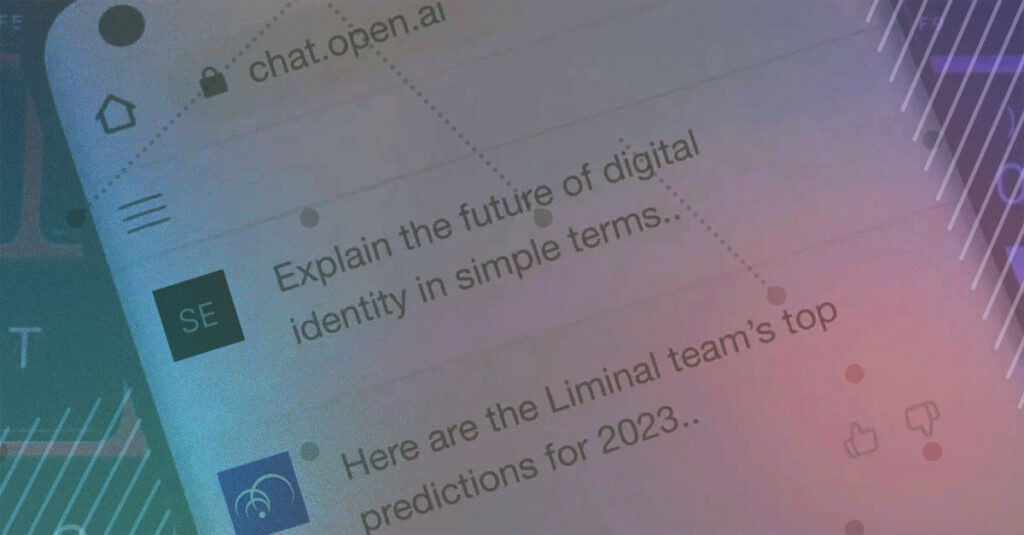
In 2023, we expect to see the digital identity market continue to evolve and adapt with a notable shift toward serving the needs and demands of consumers – crystallizing their role at the center of the identity ecosystem. It’s no easy feat – and if done successfully, we calculate the opportunity for reusable identity as a $32.8B market TAM, growing at a 68.9% CAGR by 2027.
This includes a focus on user experience and commerce, as well as an emphasis on data protection, privacy, and inclusivity. Additionally, with the expansion of digital payments and the proliferation of new digital channels and technology, we’re likely to see an increase in services for biometrics, passwordless authentication, and identity networks. It could be another challenging but exciting year for enterprises as they create innovative ways for solving old problems like persistent fraud attacks and the ever-evolving regulatory environment while serving the needs of end-users in a rapidly changing digital market.
So, where do we predict that 2023 will take the digital identity market?
Seven Digital Identity Predictions for 2023:
A new class of integrated identity platforms will emerge as market conditions will push young companies to exit prematurely and incumbents to buy revenue.
Many early-stage digital identity companies faced a stark reality in early Q2 last year, as onboarding and transaction volumes waned or decreased due to a general slump in the tech sector. The rapid slowdown stifled early-stage company growth and compelled them to retrench, resulting in mid-summer layoffs. Many of these same companies, with skeleton crews, stopped innovating at the rate required to differentiate themselves sufficiently to replace incumbents.
Many of these early-stage companies with a few million in annual revenue will be acquired over the next year, accelerating large platform growth while the economy limits organic growth. Several platforms are well-positioned to capitalize on buyer demand for large integrated identity platforms that service the entire customer lifecycle with well-designed solutions and a decision platform to improve platform efficiency.
To enhance user experience (UX), businesses will prioritize behavioral analytics and biometrics on their product roadmaps.
Consumers have become accustomed to using physical biometrics to unlock devices, authenticate payments, automatically tag photos, and various other uses over the past few years. Younger consumers are accustomed to and expect everything on their devices to be delivered to them in milliseconds, which presents another challenge for many product managers. To address the question of “how do we improve user experience to match expectations while maintaining security and minimizing fraud,” many product managers are turning to behavioral analytics and biometrics. Over the next five years, we anticipate that both solutions will be essential for any consumer platform.
Small and medium sized businesses have been the first to implement passwordless solutions, but Big Tech companies will create momentum for widespread consumer adoption.
Rarely has the answer network provided its community with such unanimity of opinion. Nearly all technology buyers concur that passwordless solutions lower cybersecurity risk, lower costs, and offer a better user experience. Large organizations still have a ways to go before adopting passwordless, lagging behind their SMB counterparts.
Big tech giants like Apple, Google, and Microsoft announced early this year that they would cooperate to increase the use of FIDO™ passkeys. We can anticipate seeing the FIDO-authorized passkey technology integrated into macOS, iOs, Windows, Chrome OS, and Android this year as they are the major device manufacturers in the majority of the world.
Numerous start-up companies will be founded this year to make the internet safer for children.
According to a recent Trusted Future survey, 77% of parents are concerned about protecting their family’s digital privacy, and 73% are worried about personal data being collected without their consent by third parties. Unsurprisingly, privacy and data protection laws are becoming more potent worldwide. Countries have been enacting online child protection laws, requiring businesses to verify users’ ages and segment them on their platforms. A growing number of industry-specific regulations are also being passed, putting additional pressure on businesses to implement age-restriction measures. It is an excellent opportunity for a few entrepreneurs to take on.
The increasing popularity and use of AI tools like ChatGPT and Midjourney will prompt policymakers to devote more time to its effects on consumer technology
Artificial intelligence and machine-learning technology are advancing exponentially and is expected to significantly alter how businesses operate globally. Competitive pressures and the benefits of AI optimization drive business processes, and sometimes entire industries, to rely more heavily on AI. Companies devote more resources to developing, procuring, or acquiring AI tools and strategies to meet this demand.
This has been noticed by legislators and policymakers. Initial AI regulation models emerged this year, and 2023 promises to usher in a new wave of AI obligations for organizations. Despite the steady growth of global AI adoption, the United States needs comprehensive federal AI legislation. Instead, the United States has a patchwork of current and proposed AI regulatory frameworks. Understanding these frameworks and preparing to comply with them is critical for organizations looking to harness this novel technology.
We won’t have a clear set of winners or losers in the battle for the reusable identity market.
In our recent research report, The Market Opportunity for Reusable Identity and How to Get There, we captured, distilled, and projected what the future might look like if we achieve identity nirvana. Building upon by our consumer survey research, we outlined the thesis in required to realize early adoption of reusable identities in our report, Personal Identity Ecosystems (PIE). We see several companies align their efforts with the PIE thesis and begin developing products that capitalize on the natural synergies between use cases and specific communities. Meanwhile, companies with existing networks and consumer adoption (e.g., Google, Apple, EarlyWarning, Mastercard, Gen) have yet to roll out the solutions we all know are in the works. By the end of the year, we should have a few more signals to use when forecasting the future, but we won’t know who the winners and losers are.
Value investing is replacing growth and we expect to see companies aligning go-to-market and product strategies for strong unit economics, steady revenue growth, and good business practices.
We saw a decrease in fundraising volume and value in 2022, with 113 deals totaling $8.7B, a 65% decrease from 2021. While many well-known companies quietly financed their businesses through debt or other novel equity structures, we anticipate that valuations will remain low relative to pre-pandemic levels.
Speaking with private equity and venture capital investors, the narrative has shifted from growth to value investing. The general agreement is that solution providers must align their GTM and product strategies, as well as demonstrate positive unit economics, sustained revenue growth, and sound business practices. In 2023, we expect clear market winners and losers, with opportunities for market winners to consolidate competitors through mergers and acquisitions or a roll-up strategy.
As we continue to keep a close eye on the changes in the digital identity market, referring to our annual Digital Identity Landscape is the best way to explore how these new trends might impact your business. Each year, we assess and validate the industry trends to provide the most up-to-date market intelligence to support digital identity executives in their strategic decision-making.
Related content:
- See how we did on our 2022 Predictions
- Explore the 2023 Digital Identity Landscape
- Sign-up for our newsletter to receive the latest trends and insights

